Antares
Respected Leader
Edellisen viestin lainaus jatkuu:
Reading the diary entries of the former chief engineer of UVZ Mikhail Tarasovich Shpak, you involuntarily feel the excitement of the author, who talks about the unsuccessful attempts of Uralvagonzavod to draw the attention of military circles of foreign countries to Nizhny Tagil tanks.
Here are some entries from his diary for 1992:
October 15: "N.A. Zhuravlev (First Deputy Head of the Moscow State Technical University - Ed.) instructed V.B. Domnina (Head of the 47th VP of the Ministry of Defense of the Russian Federation. - Ed.) to send the T-72S tank to an exhibition in the UAE. So our hope collapsed to show the T-90 to the world, to argue face-to-face with the T-80 (to measure achievements)."
October 28: “... by telegram, the customer gave the go-ahead for the participation of our T-72S tank in demonstration demonstrations in Beijing (PRC).”
December: “The struggle for the participation of the T-90 at the exhibition in the UAE continued (V.I. Potkin in the General Staff of the Ministry of Defense, General Director ... in the Department of Defense Arms Industries) ...” [31].
The military circles of foreign countries were aware that Russia adopted a single main tank T-90. Therefore, the participation of the T-72s tank at international arms exhibitions and tender tests did not arouse much interest among specialists.
These include:
- demonstration of T-80U and T-72S tanks in China in 1993;
- tender tests of two T-80U and one T-72S tanks in India in 1993;
- Demonstration of T-80U and T-72S tanks at the international exhibition of arms, military equipment and defense technologies IDEX in Abu Dhabi in 1995;
- tender tests of two T-80U and one T-72S tanks in Syria in 1992-1993 [31].
Despite the superiority of the T-72S tank in comparison with the T-72M1 tanks by 1.59 times and the positive results of the T-72s tests in 1993 in the most difficult climatic conditions of India at an air temperature reaching 57°C, (the T-80U tank did not stand the test), this country did not intend to acquire it and continued the serial production of T-72M1 tanks.
Even earlier, in 1988, an attempt by Uralvagonzavod to negotiate with Kuwait on the transfer of a batch of T-72S (T-72SK) tanks also did not bring success.
A repeated attempt to draw attention to the T-72S tank by the Indian military delegation, which arrived at Uralvagonzavod at the end of 1993 to get acquainted with the special equipment manufactured by the plant, was also unsuccessful.
IN AND. Potkin attached great importance to the participation of Uralvagonzavod tanks in these international events, sending the best design bureau specialists there, as a rule, to the positions of his deputies (N.A. Molodnyakova, A.S. Shelgachev, Yu.N. Neugebauer).
I have been on such business trips myself many times (in China, Abu Dhabi, India). In 1992, on behalf of the Department of Defense Industry, Potkin was to travel to Pakistan to discuss with the country's military leadership the issue of supplying a batch of T-72S tanks. But official Delhi delivered a tough ultimatum: either Russia refuses to participate in the Pakistani contract, or India freezes the Indian-Russian program of military-technical cooperation, which was estimated at 2.0-2.5 billion dollars [31, 64]. The business trip was cancelled.
Therefore, the victorious reports of supporters of the Kharkov T-80UD (T-84) tank circulating in the media and the Internet about winning the Pakistani tender (with a tacit hint to the reader about Russia's participation in this tender) have no basis. Only Ukraine participated in this “tender”. For several years, Pakistan has been seeking a positive decision from the Russian government on applications for the supply of domestic tanks to this country. When this was denied to Pakistan for political reasons, it was forced to apply for help to Ukraine, rightly believing that the combat characteristics of the T-80UD (T-84) should be close to the characteristics of Russian tanks.
"Pakistan, which has spoiled relations with Western arms suppliers because of its nuclear program, acquired the T-80UD solely because no one else was selling third-generation tanks to it. Here is both the beginning and the end of Ukrainian success” [65].
Despite the dependence of Ukraine on Russia in the supply of many critical components for the assembly of T-80UD tanks and the unresolved issue with Russia, Pakistan agreed to conclude a contract with Ukraine. In many ways, this decision was influenced by the fact that the price of the T-80UD tank was set lower than the Russian T-90S tank by 40%, and the importer's guarantee to resolve the issue with the supply of components and spare parts in a positive way [66].
By the way, what prevented Ukraine from being the first to offer its services to India before signing a contract with Pakistan?
Special attention to V.I. Potkin paid attention to the participation of UVZ tanks at the international exhibition of arms, military equipment and defense technologies IDEX in Abu Dhabi. This exposition is held in the Emirati capital once every two years, since 1993, and is one of the most representative arms exhibitions in the world.
Bloody wars that have been going on for many years in the Arab countries of the Middle East arouse great interest at the exhibition in the samples of weapons and military equipment presented by specialists from these wealthy countries.
During IDEX, multimillion-dollar contracts are concluded for the supply of military equipment and the modernization of weapons.
Russia has been a constant participant of IDEX exhibitions since 1993. Until 2000, the Russian exposition was organized by FSUE Rosoboronexport>>*.
Meanwhile, Moscow officials stubbornly continued not to allow the T-90S tank to be shown at exhibitions. And their attempts to secure a major contract for the production of an export batch of T-80U tanks invariably ended in failure. It is useful to remind readers that “the rumors persistently circulating in the Western press about the sale in 1995 of 150-200 T-80U to China turned out to be incorrect. The Chinese got acquainted with these vehicles, for which there are even photographic documents, but they refused to purchase ... An important factor was the development of the tank, which had advanced far in the PRC, based on the documentation for the T-72 received from Eastern Europe” [65].
In 1997, the T-90S tank first appeared at the international arms exhibition in Abu Dhabi, but N.A. Rosvooruzhenie did not give Molodnyakov permission to fly out of Moscow until the very beginning of the opening of the exhibition. This almost led to the disruption of the demonstration of the T-90 tank.
It should be noted that the energetic assistance of the new head of the GABTU S.A. began with this exhibition. Maev to the efforts of Uralvagonzavod and UKBTM in promoting the T-90S tank to India.
The exposition of the T-90S tank was visited by representatives of many countries, including India. The Deputy Commander-in-Chief of the Indian Army spent several days studying the design differences between this tank and the T-72M1, which is in service with the national army, and, apparently, showed him respect.
In 1997-1999, the Indian military repeatedly visited Moscow, the 38th Research Institute of the RF Ministry of Defense, Uralvagonzavod and the NTIIM training ground in Nizhny Tagil. Indian specialists studied the technological readiness of UVZ to fulfill the upcoming large order of T-90S tanks, in-depth assessed the combat qualities of the tank at military training grounds, and formed requirements for the appearance of the tank with UKBTM.
Meetings were held in June and November 1998 to discuss the performance characteristics of the T-90S tank. The meeting in Moscow, held on November 12, 1998, ended with the signing of the "Minutes of discussion of the comparative characteristics of the T-90S". The Indian military delegation was headed by the Deputy Chief of Staff of the Lieutenant General Mehta. One of his key questions was to obtain information from representatives of UVZ and UKBTM (V.B. Domnin and N.A. Molodnyakov) on the status of work on the 1000 hp engine.
* By the end of the 1990s, two state intermediaries for the special exporter, FSUE State Company Rosvooruzhenie and FSUE Promeksport, operated in Russia. As part of the reform of the system of military-technical cooperation between Russia and foreign states, Decree of the President of the Russian Federation No. 1834 dated November 4, 2000 created a single state intermediary for the export-import of military products FSUE Rosoboronexport. - Ed.
In his response to N.A. Molodnyakov said: “The engine has already passed the state stage of testing. It was tested in strictly defined test parameters in all weather conditions.”
The meeting ended with the approval of the following main components of the T-90S tank and performance characteristics different from the T-72M1:
- reinforced onboard gearboxes;
- new power plant cooling system (fan, radiators);
- new system of exhaust gases from the engine;
- modified configuration of the roof over the engine; - modernized gun 2A46M with improved ballistic characteristics sticks in a design that ensures the replacement of the barrel without rolling out the gun from the turret;
- an electro-optical gunner's night sight with an increased target identification range of the "tank" type up to 1500 m;
- the maximum firing range of a tank guided missile (TUR) 5000 m instead of 4000 m;
- a two-plane armament stabilizer that provides firing of the TUR when the tank is moving;
- autonomous closed remote-controlled anti-aircraft machine gun installation;
- reinforced undercarriage with a caterpillar track with a parallel RMSH, which allows the installation of "asphalt shoes";
- reinforced combined armor protection of the frontal part of the tank; - reduction of ammunition by two shots due to the greater amount of equipment placed in the fighting compartment.
The superiority of the modernized T-90S tank in comparison with the T-72M1 tank mass-produced in India was 2.1 times.
The text of the protocol ended with an optimistic entry:
"Both sides agreed that the Russian side would send a delegation to Delhi on November 30, 1998 to discuss and sign a contract for the supply of T-90S tanks to India" [52].
By the specified date, a military-industrial delegation of Russia arrived in the capital of India, Delhi, which included representatives of the Russian Armed Forces, the Ministry of Economy, the head of the GABTU of the Ministry of Defense of the Russian Federation S.A. Maev, General Director of Uralvagonzavod N.A. Malykh, chief designer of the Ural Design Bureau of Transport Engineering V.I. Potkin.
The intention of the Russian delegation was to formally discuss and sign the contract in accordance with the agreed minutes of the meeting dated November 12, 1998.
However, a detailed speech by V.I. Potkin about the structural changes made to the design of the T-90S tank, which led to a significant increase in the combat qualities of the tank, was met by Indian military specialists with icy indifference.
And the next day, with all their behavior, the quasi-buyers of the T-90S tank emphasized that they were not interested in this tank at all.
A dramatic situation arose in which the failure of further negotiations between the Russian delegation and the Indian military leadership on the signing of a contract clearly loomed.
Vladimir Ivanovich was not a naive person. He knew that the meeting would be followed by questions about the state of work at UKBTM on testing the most important systems and components of a new generation tank - the SLA and the power plant with a thousand horsepower diesel engine. And such work has already been deployed in the design bureau and was carried out in a busy mode around the clock. But in the process of design and development tests of these complex experimental designs, the end of the work was not in sight. However, Potkin could not even imagine that the Indian side would refuse the terms of the contract, worked out at the Moscow meeting on November 12. After painful reflections and discussions of the current situation with N.A. Malykh and S.A. Maev, Vladimir Ivanovich made a firm decision to offer the Indian military a new composition of the modernized T-90S tank. Having received the consent of his members of the delegation to this, he announced at the next meeting that the Russian side wants to propose to the Indian side a modernized T-90S tank in a new configuration...
This news was greeted with great approval by all the Indian specialists present. The Indian side put forward a proposal to test in the Thar desert three modernized T-90S tanks in a new configuration in May-June 1999 (the hottest time of the year) in the amount of 2000 km with continuous marches with firing in the amount of one hundred and fifty shots, including ten TUR shots. Tests should be carried out by trained Indian crews, mainly officers with experience in operating T-72 tanks. These conditions were accepted by the Russian side.
Upon arrival in Nizhny Tagil, N.A. Malykh and V.I. Potkin had a huge work to mobilize the teams of their own and related enterprises to fulfill their obligations. This time, of course, took away some of the health of many people and, at least, added gray hair and wrinkles to them. Just six months after the mentioned meeting with the Indian military leadership in Delhi in November-December 1998, it was required to ensure that suppliers comply with regulatory documents to ensure specified technical characteristics.
A struggle broke out between subcontractors to obtain a part of the proposed contract. As always, traditionally, Moscow officials, who manage the armored industry, actively interfered with UKBTM in carrying out work, patronizing the enterprise, which completely failed to create the most important component of the tank. As a result, two thousand-horsepower engines and three control systems from different manufacturers were simultaneously forced to test at UKBTM. Each of these five components of the tank differed from the other competitor in design, required re-arrangement for its placement of neighboring assembly units...
On April 6, 1999, the first stage of the contract was signed, providing for the testing of three T-90S tanks in India, which differed in their configuration in accordance with the customer's wishes. The fate of the subsequent stages of the agreement depended on the test results.
Tanks were equipped with three variants of the FCS with different gunner's night sights: the Buran serial image intensifier tube and the Nocturne thermal imaging sights developed by the Krasnogorsk optical-mechanical plant. Zverev, and <<ESSA>> joint French-Belarusian production. The tanks were distinguished by the presence or absence of the Shtora-1 optical-electronic suppression system, which provides all-round protection for the vehicle from being hit by guided missiles of anti-tank systems with infrared or laser guidance systems. Two vehicles had cast turrets, and one was made by welding rolled armor plates. A welded turret with equal armor protection with a cast turret had a lower mass and a slightly increased internal volume. All tanks were equipped with a reinforced undercarriage and a power plant with a thousand-horsepower engine. IN AND. Potkin, on a competitive basis, chose the V-92S2 diesel engine of the Chelyabinsk Tractor Plant for installation in the tank. In the process of bench and sea trials of prototypes of the KD-34 diesel engine manufactured by the Barnaultransmash plant, several resource failures occurred. At the same time, similar tests of the B-92С2 engine confirmed the indicators specified in the TOR, including reliability. But the choice of the engine was not easy for Vladimir Ivanovich, since the total amount of testing of prototypes of the B-92С2 diesel engine was insufficient for complete confidence in its reliability.
There was a certain risk for Uralvagonzavod, since the new engine was not tested in fifty-degree heat.
The end of production and technological testing at the T-90S tank factory was very stressful. The deadlines for obtaining purchased components were missed. The former branch of the Leningrad Kirov Plant in Tikhvin did not give up the tracks, demanding cash payment. Krasnogorsk Optical and Mechanical Plant named after S.A. Zverev disrupted the delivery of the sight to the third machine. There were comments on the operation of the B-92C2 engines during stationary and run technological tests (oil leakage along the mating surfaces of the compressor), a large amount of work on debugging the control system on three machines was not completed.
To complete the work in the assembly shop "130", round-the-clock duty of the designers of UKBTM, technologists of the plant was organized. Operations were carried out with the participation of the chief designer V.I. Potkin and his deputies, heads of workshops and specialists of the plant, representatives of allied enterprises.
Uralvagonzavod and UKBTM began preparing a joint brigade of specialists for a trip to India to participate in training Indian crews in the operation of tanks, preparing vehicles in order to confirm their combat characteristics and monitor the progress of tests.
On May 17, 1999, two An-124 Ruslan aircraft with three T-90S tanks were preparing to fly to India from the Koltsovo airport.
On May 13, refusing to go to the hospital due to poor health, Vladimir Ivanovich Potkin died in his office.
Not for a single minute, while in the post of chief designer, Vladimir Ivanovich did not forget that he was a representative of a special officer caste of people. And these people, taking the oath of allegiance to the Fatherland, were always ready sacrifice your life to him.
Reading the diary entries of the former chief engineer of UVZ Mikhail Tarasovich Shpak, you involuntarily feel the excitement of the author, who talks about the unsuccessful attempts of Uralvagonzavod to draw the attention of military circles of foreign countries to Nizhny Tagil tanks.
Here are some entries from his diary for 1992:
October 15: "N.A. Zhuravlev (First Deputy Head of the Moscow State Technical University - Ed.) instructed V.B. Domnina (Head of the 47th VP of the Ministry of Defense of the Russian Federation. - Ed.) to send the T-72S tank to an exhibition in the UAE. So our hope collapsed to show the T-90 to the world, to argue face-to-face with the T-80 (to measure achievements)."
October 28: “... by telegram, the customer gave the go-ahead for the participation of our T-72S tank in demonstration demonstrations in Beijing (PRC).”
December: “The struggle for the participation of the T-90 at the exhibition in the UAE continued (V.I. Potkin in the General Staff of the Ministry of Defense, General Director ... in the Department of Defense Arms Industries) ...” [31].
The military circles of foreign countries were aware that Russia adopted a single main tank T-90. Therefore, the participation of the T-72s tank at international arms exhibitions and tender tests did not arouse much interest among specialists.
These include:
- demonstration of T-80U and T-72S tanks in China in 1993;
- tender tests of two T-80U and one T-72S tanks in India in 1993;
- Demonstration of T-80U and T-72S tanks at the international exhibition of arms, military equipment and defense technologies IDEX in Abu Dhabi in 1995;
- tender tests of two T-80U and one T-72S tanks in Syria in 1992-1993 [31].
Despite the superiority of the T-72S tank in comparison with the T-72M1 tanks by 1.59 times and the positive results of the T-72s tests in 1993 in the most difficult climatic conditions of India at an air temperature reaching 57°C, (the T-80U tank did not stand the test), this country did not intend to acquire it and continued the serial production of T-72M1 tanks.
Even earlier, in 1988, an attempt by Uralvagonzavod to negotiate with Kuwait on the transfer of a batch of T-72S (T-72SK) tanks also did not bring success.
A repeated attempt to draw attention to the T-72S tank by the Indian military delegation, which arrived at Uralvagonzavod at the end of 1993 to get acquainted with the special equipment manufactured by the plant, was also unsuccessful.
IN AND. Potkin attached great importance to the participation of Uralvagonzavod tanks in these international events, sending the best design bureau specialists there, as a rule, to the positions of his deputies (N.A. Molodnyakova, A.S. Shelgachev, Yu.N. Neugebauer).
I have been on such business trips myself many times (in China, Abu Dhabi, India). In 1992, on behalf of the Department of Defense Industry, Potkin was to travel to Pakistan to discuss with the country's military leadership the issue of supplying a batch of T-72S tanks. But official Delhi delivered a tough ultimatum: either Russia refuses to participate in the Pakistani contract, or India freezes the Indian-Russian program of military-technical cooperation, which was estimated at 2.0-2.5 billion dollars [31, 64]. The business trip was cancelled.
Therefore, the victorious reports of supporters of the Kharkov T-80UD (T-84) tank circulating in the media and the Internet about winning the Pakistani tender (with a tacit hint to the reader about Russia's participation in this tender) have no basis. Only Ukraine participated in this “tender”. For several years, Pakistan has been seeking a positive decision from the Russian government on applications for the supply of domestic tanks to this country. When this was denied to Pakistan for political reasons, it was forced to apply for help to Ukraine, rightly believing that the combat characteristics of the T-80UD (T-84) should be close to the characteristics of Russian tanks.
"Pakistan, which has spoiled relations with Western arms suppliers because of its nuclear program, acquired the T-80UD solely because no one else was selling third-generation tanks to it. Here is both the beginning and the end of Ukrainian success” [65].
Despite the dependence of Ukraine on Russia in the supply of many critical components for the assembly of T-80UD tanks and the unresolved issue with Russia, Pakistan agreed to conclude a contract with Ukraine. In many ways, this decision was influenced by the fact that the price of the T-80UD tank was set lower than the Russian T-90S tank by 40%, and the importer's guarantee to resolve the issue with the supply of components and spare parts in a positive way [66].
By the way, what prevented Ukraine from being the first to offer its services to India before signing a contract with Pakistan?
Special attention to V.I. Potkin paid attention to the participation of UVZ tanks at the international exhibition of arms, military equipment and defense technologies IDEX in Abu Dhabi. This exposition is held in the Emirati capital once every two years, since 1993, and is one of the most representative arms exhibitions in the world.
Bloody wars that have been going on for many years in the Arab countries of the Middle East arouse great interest at the exhibition in the samples of weapons and military equipment presented by specialists from these wealthy countries.
During IDEX, multimillion-dollar contracts are concluded for the supply of military equipment and the modernization of weapons.
Russia has been a constant participant of IDEX exhibitions since 1993. Until 2000, the Russian exposition was organized by FSUE Rosoboronexport>>*.
Meanwhile, Moscow officials stubbornly continued not to allow the T-90S tank to be shown at exhibitions. And their attempts to secure a major contract for the production of an export batch of T-80U tanks invariably ended in failure. It is useful to remind readers that “the rumors persistently circulating in the Western press about the sale in 1995 of 150-200 T-80U to China turned out to be incorrect. The Chinese got acquainted with these vehicles, for which there are even photographic documents, but they refused to purchase ... An important factor was the development of the tank, which had advanced far in the PRC, based on the documentation for the T-72 received from Eastern Europe” [65].
In 1997, the T-90S tank first appeared at the international arms exhibition in Abu Dhabi, but N.A. Rosvooruzhenie did not give Molodnyakov permission to fly out of Moscow until the very beginning of the opening of the exhibition. This almost led to the disruption of the demonstration of the T-90 tank.
It should be noted that the energetic assistance of the new head of the GABTU S.A. began with this exhibition. Maev to the efforts of Uralvagonzavod and UKBTM in promoting the T-90S tank to India.
The exposition of the T-90S tank was visited by representatives of many countries, including India. The Deputy Commander-in-Chief of the Indian Army spent several days studying the design differences between this tank and the T-72M1, which is in service with the national army, and, apparently, showed him respect.
In 1997-1999, the Indian military repeatedly visited Moscow, the 38th Research Institute of the RF Ministry of Defense, Uralvagonzavod and the NTIIM training ground in Nizhny Tagil. Indian specialists studied the technological readiness of UVZ to fulfill the upcoming large order of T-90S tanks, in-depth assessed the combat qualities of the tank at military training grounds, and formed requirements for the appearance of the tank with UKBTM.
Meetings were held in June and November 1998 to discuss the performance characteristics of the T-90S tank. The meeting in Moscow, held on November 12, 1998, ended with the signing of the "Minutes of discussion of the comparative characteristics of the T-90S". The Indian military delegation was headed by the Deputy Chief of Staff of the Lieutenant General Mehta. One of his key questions was to obtain information from representatives of UVZ and UKBTM (V.B. Domnin and N.A. Molodnyakov) on the status of work on the 1000 hp engine.
* By the end of the 1990s, two state intermediaries for the special exporter, FSUE State Company Rosvooruzhenie and FSUE Promeksport, operated in Russia. As part of the reform of the system of military-technical cooperation between Russia and foreign states, Decree of the President of the Russian Federation No. 1834 dated November 4, 2000 created a single state intermediary for the export-import of military products FSUE Rosoboronexport. - Ed.
In his response to N.A. Molodnyakov said: “The engine has already passed the state stage of testing. It was tested in strictly defined test parameters in all weather conditions.”
The meeting ended with the approval of the following main components of the T-90S tank and performance characteristics different from the T-72M1:
- reinforced onboard gearboxes;
- new power plant cooling system (fan, radiators);
- new system of exhaust gases from the engine;
- modified configuration of the roof over the engine; - modernized gun 2A46M with improved ballistic characteristics sticks in a design that ensures the replacement of the barrel without rolling out the gun from the turret;
- an electro-optical gunner's night sight with an increased target identification range of the "tank" type up to 1500 m;
- the maximum firing range of a tank guided missile (TUR) 5000 m instead of 4000 m;
- a two-plane armament stabilizer that provides firing of the TUR when the tank is moving;
- autonomous closed remote-controlled anti-aircraft machine gun installation;
- reinforced undercarriage with a caterpillar track with a parallel RMSH, which allows the installation of "asphalt shoes";
- reinforced combined armor protection of the frontal part of the tank; - reduction of ammunition by two shots due to the greater amount of equipment placed in the fighting compartment.
The superiority of the modernized T-90S tank in comparison with the T-72M1 tank mass-produced in India was 2.1 times.
The text of the protocol ended with an optimistic entry:
"Both sides agreed that the Russian side would send a delegation to Delhi on November 30, 1998 to discuss and sign a contract for the supply of T-90S tanks to India" [52].
By the specified date, a military-industrial delegation of Russia arrived in the capital of India, Delhi, which included representatives of the Russian Armed Forces, the Ministry of Economy, the head of the GABTU of the Ministry of Defense of the Russian Federation S.A. Maev, General Director of Uralvagonzavod N.A. Malykh, chief designer of the Ural Design Bureau of Transport Engineering V.I. Potkin.
The intention of the Russian delegation was to formally discuss and sign the contract in accordance with the agreed minutes of the meeting dated November 12, 1998.
However, a detailed speech by V.I. Potkin about the structural changes made to the design of the T-90S tank, which led to a significant increase in the combat qualities of the tank, was met by Indian military specialists with icy indifference.
And the next day, with all their behavior, the quasi-buyers of the T-90S tank emphasized that they were not interested in this tank at all.
A dramatic situation arose in which the failure of further negotiations between the Russian delegation and the Indian military leadership on the signing of a contract clearly loomed.
Vladimir Ivanovich was not a naive person. He knew that the meeting would be followed by questions about the state of work at UKBTM on testing the most important systems and components of a new generation tank - the SLA and the power plant with a thousand horsepower diesel engine. And such work has already been deployed in the design bureau and was carried out in a busy mode around the clock. But in the process of design and development tests of these complex experimental designs, the end of the work was not in sight. However, Potkin could not even imagine that the Indian side would refuse the terms of the contract, worked out at the Moscow meeting on November 12. After painful reflections and discussions of the current situation with N.A. Malykh and S.A. Maev, Vladimir Ivanovich made a firm decision to offer the Indian military a new composition of the modernized T-90S tank. Having received the consent of his members of the delegation to this, he announced at the next meeting that the Russian side wants to propose to the Indian side a modernized T-90S tank in a new configuration...
This news was greeted with great approval by all the Indian specialists present. The Indian side put forward a proposal to test in the Thar desert three modernized T-90S tanks in a new configuration in May-June 1999 (the hottest time of the year) in the amount of 2000 km with continuous marches with firing in the amount of one hundred and fifty shots, including ten TUR shots. Tests should be carried out by trained Indian crews, mainly officers with experience in operating T-72 tanks. These conditions were accepted by the Russian side.
Upon arrival in Nizhny Tagil, N.A. Malykh and V.I. Potkin had a huge work to mobilize the teams of their own and related enterprises to fulfill their obligations. This time, of course, took away some of the health of many people and, at least, added gray hair and wrinkles to them. Just six months after the mentioned meeting with the Indian military leadership in Delhi in November-December 1998, it was required to ensure that suppliers comply with regulatory documents to ensure specified technical characteristics.
A struggle broke out between subcontractors to obtain a part of the proposed contract. As always, traditionally, Moscow officials, who manage the armored industry, actively interfered with UKBTM in carrying out work, patronizing the enterprise, which completely failed to create the most important component of the tank. As a result, two thousand-horsepower engines and three control systems from different manufacturers were simultaneously forced to test at UKBTM. Each of these five components of the tank differed from the other competitor in design, required re-arrangement for its placement of neighboring assembly units...
On April 6, 1999, the first stage of the contract was signed, providing for the testing of three T-90S tanks in India, which differed in their configuration in accordance with the customer's wishes. The fate of the subsequent stages of the agreement depended on the test results.
Tanks were equipped with three variants of the FCS with different gunner's night sights: the Buran serial image intensifier tube and the Nocturne thermal imaging sights developed by the Krasnogorsk optical-mechanical plant. Zverev, and <<ESSA>> joint French-Belarusian production. The tanks were distinguished by the presence or absence of the Shtora-1 optical-electronic suppression system, which provides all-round protection for the vehicle from being hit by guided missiles of anti-tank systems with infrared or laser guidance systems. Two vehicles had cast turrets, and one was made by welding rolled armor plates. A welded turret with equal armor protection with a cast turret had a lower mass and a slightly increased internal volume. All tanks were equipped with a reinforced undercarriage and a power plant with a thousand-horsepower engine. IN AND. Potkin, on a competitive basis, chose the V-92S2 diesel engine of the Chelyabinsk Tractor Plant for installation in the tank. In the process of bench and sea trials of prototypes of the KD-34 diesel engine manufactured by the Barnaultransmash plant, several resource failures occurred. At the same time, similar tests of the B-92С2 engine confirmed the indicators specified in the TOR, including reliability. But the choice of the engine was not easy for Vladimir Ivanovich, since the total amount of testing of prototypes of the B-92С2 diesel engine was insufficient for complete confidence in its reliability.
There was a certain risk for Uralvagonzavod, since the new engine was not tested in fifty-degree heat.
The end of production and technological testing at the T-90S tank factory was very stressful. The deadlines for obtaining purchased components were missed. The former branch of the Leningrad Kirov Plant in Tikhvin did not give up the tracks, demanding cash payment. Krasnogorsk Optical and Mechanical Plant named after S.A. Zverev disrupted the delivery of the sight to the third machine. There were comments on the operation of the B-92C2 engines during stationary and run technological tests (oil leakage along the mating surfaces of the compressor), a large amount of work on debugging the control system on three machines was not completed.
To complete the work in the assembly shop "130", round-the-clock duty of the designers of UKBTM, technologists of the plant was organized. Operations were carried out with the participation of the chief designer V.I. Potkin and his deputies, heads of workshops and specialists of the plant, representatives of allied enterprises.
Uralvagonzavod and UKBTM began preparing a joint brigade of specialists for a trip to India to participate in training Indian crews in the operation of tanks, preparing vehicles in order to confirm their combat characteristics and monitor the progress of tests.
On May 17, 1999, two An-124 Ruslan aircraft with three T-90S tanks were preparing to fly to India from the Koltsovo airport.
On May 13, refusing to go to the hospital due to poor health, Vladimir Ivanovich Potkin died in his office.
Not for a single minute, while in the post of chief designer, Vladimir Ivanovich did not forget that he was a representative of a special officer caste of people. And these people, taking the oath of allegiance to the Fatherland, were always ready sacrifice your life to him.
Viimeksi muokattu:

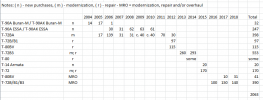
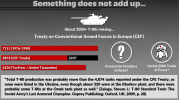








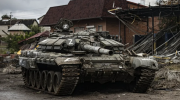
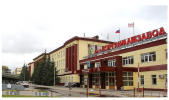

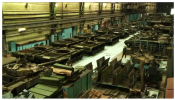
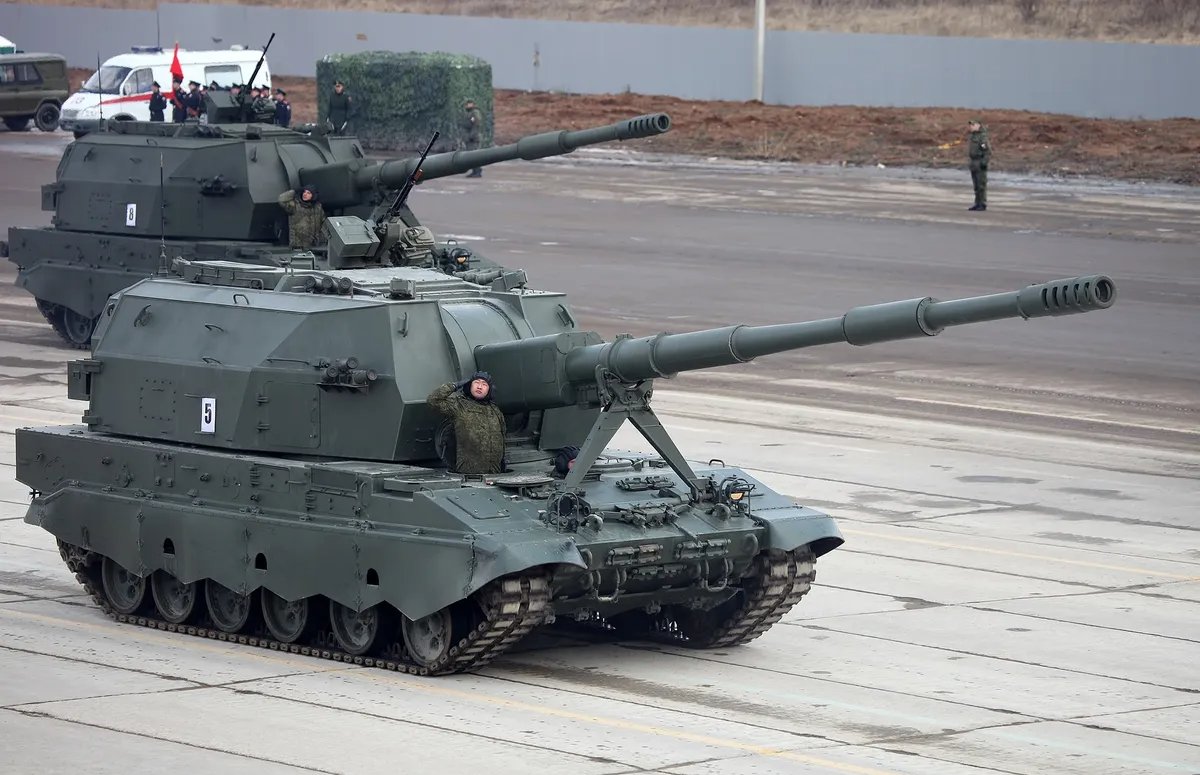




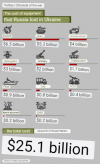
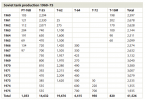


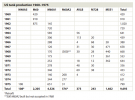
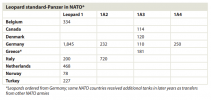
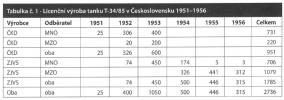


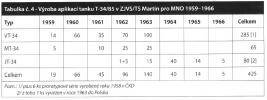
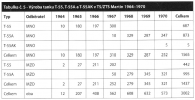
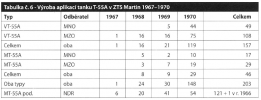
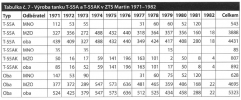
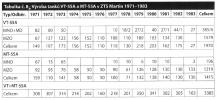





 Russia is going to lose and that is more important. Appreciate all the counting you have done
Russia is going to lose and that is more important. Appreciate all the counting you have done

















